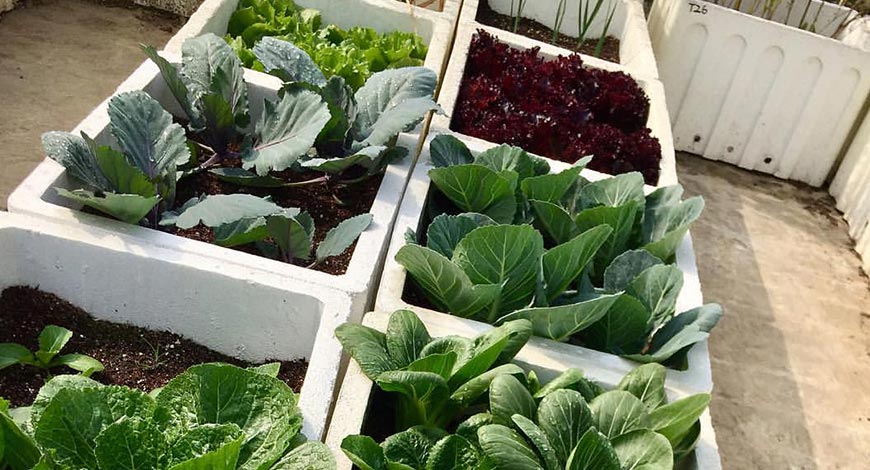Piyush Ranjan Rout
Exactly a year ago lockdown was imposed in most of the world’s urban areas and Bhubaneswar was no exception. During the period, people took up many activities at their homes to keep themselves engaged. Thousands of Bhubaneswar residents planted ‘lockdown gardens’ in their backyards, rooftops, even inside homes. Once the lockdown period was over, some of these gardens withered away and were supplanted by increasingly efficient urban agriculture.
Even though without much or no incentive from the government, urban farming is now staging a curious comeback. Residents of Bhubaneswar have set up their own gardens for encouraging people to grow crops in vacant lots or on rooftops. The lockdown has promoted the resurgence of community gardens or urban farming as the solution for ‘food deserts’ in city neighbourhoods.
But do these gardens actually make sense? Are there real social or environmental benefits to growing food within city limits? Or is urban farming just a well-meaning but ultimately insignificant hobby for urban elites?
What emerges is a nuanced picture. Urban farming likely won’t ever provide cities with all that many calories. But urban farms can provide a bunch of other neat benefits, from bolstering local communities to (sometimes) encouraging healthier diets. They can also give city-dwellers a better appreciation of how our food system works, which is less nebulous than it sounds.
There are a few takeaways that the government may consider to incentivise urban farming post-pandemic as a regular programme.
Community gardens and urban farms can provide some families with an additional source of healthy, low-cost produce. That’s a worthwhile goal in itself, and there is a belief that people who engage in urban farming eat more fruits and vegetables.
A number of cities across the globe have been pushing community gardens and farms as a way of revitalising neighbourhoods falling into disrepair and there is indeed evidence that urban farming is quite valuable for city residents.
The presence of urban farms is associated with improved neighbourhood aesthetics, reduced crime, and community cohesion. When a community garden is established in a neighbourhood, it keeps its resident engaged as it increases social bonds and networks among neighbours and the people who participate in farming.
These farms bridge gaps, reduce existing tensions, and foster social integration between otherwise segregated groups. Just like tilling the soil on a weekend is a great way to bring people together. It’s also a healthy, relaxing activity.
Urban farms can serve as sites for education, development, and skill training opportunities. Some cities have programmes that use urban agriculture to help teach young people about science, environmental stewardship, and healthy eating.
Modern-day industrial agriculture certainly has its environmental drawbacks from soil degradation to disruption of the nitrogen cycle to all the fossil fuels used for the heavy machinery. Urban agriculture reduces the distance that food needs to be transported and decreases the overall carbon footprint of agriculture.
There are other angles to consider, too: urban growers often use less water and fertilizer and pesticides than rural farms do. Urban agriculture does have environmental benefits. Community gardens and green roofs can help filter out local air pollution, cool down cities during summer and retain precipitation by avoiding storm-water runoff into nearby waterways. When designed well, urban gardens can provide valuable habitats.
People who participated for the first time in a community garden learned what it takes to grow different crops and appreciate how difficult it actually is. Similarly, people can better grasp the seasonality of different fruits and vegetables once they are into urban farming. They can learn why food waste occurs. They can see first-hand the ins and outs of a complex, vital system most have lost touch by spending a few months taking a potato from seed to harvest, and children will soon have a much deeper appreciation for the natural systems on which a city depends.
Urban agriculture is most valuable for how it forces community to be more conscientious about the people who feed society at large: the farmer, the agriculture labourer, the market and the business community, the cooks in homes and restaurants.
Do lockdown gardens push for broader reforms in our food security pattern? Right now, it’s a little tough to say. But if urban farming keeps expanding with encouragement from government, then this may turn out to be its biggest achievement in the pandemic.
The writer is an urban management practitioner. He can be reached on Twitter @piyushrout.
